Food Safety and your Kids: Everything you need to Know
 32700
32700
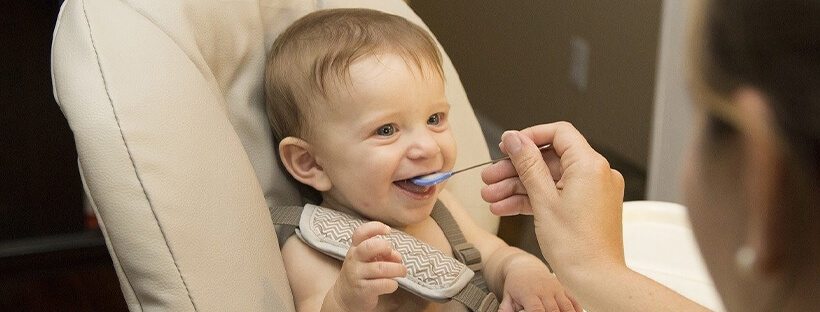
super easy
On a Sunday afternoon, on her husband’s demand, there was Dal Tadka and Bhuna Chicken on making. The aroma was all over the house, which made everyone hungry sooner than any other day. But, Shwetha was not excited. She looked worried as one of her friend’s child was in the hospital. The reason was food poisoning. Being a mother of a toddler, it made her anxious about the food that she buys and prepares for her baby. Your baby is happiest when it is healthiest. What more you need in life as a mother? But this happiness of yours will fade away if you skip having a check on your baby’s food! Yes, the quality and safety of baby food is a must. And this pandemic situation has made us realize that even more. But how to do this? How can you make sure that you are feeding your baby a safe and healthy meal? Here comes the food safety guide for your help! In this blog, I will explain what food safety is and the food safety tips you need to follow to ensure your baby’s health. I am sure, after reading this post, you will be aware and more confident about your baby’s food. So, let us begin!
What is Food Safety?
Image source: www.tentamus.com
Food safety is a scientific process approach that has to be applied at every step of food preparation. This starts with purchasing quality raw materials, handling, cooking, storage, and serving. In simple words, I can say, Food Safety helps you to make sure that the food you prepare is safe for consumption. As your little one grows, you start feeding solid foods in the form of puree, soups, finger foods, etc. You may be wondering what food safety has to do in this stage? I will explain it. As you prepare food, there are many chances of hazards entering your food. These include germs or microbes, physical foreign particles, and chemical materials. Your baby is vulnerable to food-borne illness. This is because his or her immune system is not developed enough to fight against the illness. Less acid in your baby’s stomach also leads to the multiplication of germs and may harm your baby. So, what is the solution? The answer is, follow the food safety guidelines. These will never fail you in preparing safe food for your little one.
Your Baby is Safe if Home-Cooked Food is safe:
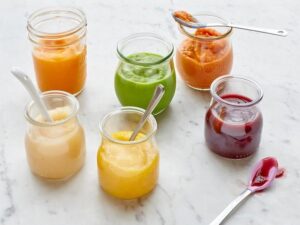
Image source: in.pinterest.com
If you want to serve safe food for your baby at home, follow the following four: Clean, Cook, Chill, and Separate.
Clean and/or sort all the food materials that go into baby food. All the food contacting areas must be clean without any contamination. These include the containers, utensils, food preparation area, and cutting boards. Cooking and holding the temperature of the food is important. The undercooked eggs, poultry may have a serious effect on your baby. If you have to feed your baby after some hours, do not leave it at room temperature for more than two hours; instead, cool it down by placing it in the vessel containing cold water. After cooling down, refrigerate it. Do you know why this is done? Because this process helps to prevent the food from microbial contamination. When in need, reheat it using a microwave or hot water bath. Do not refrigerate for more than three days. It is always better if you prepare pureed vegetables, fruits, and soups enough for several meals. You can use a covered ice-cube tray and freeze these, which you can defrost and use later as per need. Always remember, when it comes to serving the food, follow this rule. Serve hot food hot and cold food cold.
Prevention of cross-contamination is possible with proper segregation of food in your food storage areas. Always store the veg above non-veg food and cooked above raw foods. Follow this method; you will be halfway there in the prevention of cross-contamination. If you have to travel, do not forget to keep the food at a chilled temperature using ice packs. Avoid leftover foods and always prefer fresh food for your little one.
How to Ensure the Food Safety of Ready to Eat solid foods?
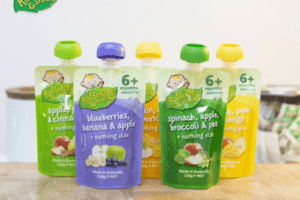
Image source: www.prweek.com
If you opt for ready to eat or ready to serve food for your baby, you must first check for the labeling. Focus on the shelf life details, preparation, and storage instructions. When you open the vacuum-sealed food jars, there must be a popping sound. This shows that the seal of the jar was intact. Hence no harmful bacteria would have entered the jar. If there is no such sound while opening it, then discard it. Baby food cans, pouches with leakage, and swelling indicate the presence of bacterial growth. So, do not use these for your baby. If you find any unusual odor and appearance inside the baby food jars or cans, discard it. Once you open the cans or jars, store it in the refrigerator. It is always better to transfer the required amount of food into a separate dish for feeding your baby. This helps in keeping the unused food in the original container without any risk of contamination. If you allow your baby to eat from the pouches, do not store it. This is because the bacterias from the mouth may multiply in the remaining food. If you feed again from the same pouch, the harmful bacterias may enter into your baby and may cause discomfort. Always use the icepacks to keep the opened food jars refrigerated during transport. Make sure you buy the chilled and frozen baby foods from reputed suppliers. If you opt for home delivery, make sure you are available to receive the products. You make sure they are in a chilled or frozen state and within the date of expiry. Once received, place these items in their required storage areas. Always buy the chilled and frozen food products at the end of your shopping. This helps you to keep these in your house chiller or freezer as soon as possible. The storage temperature of your baby’s food is very crucial. Do not allow your baby food to reach the temperature danger zone (5 to 60 degrees Celsius). This temperature zone allows the harmful bacterias to grow in your baby’s food. So, make sure you do not feed your baby these harmful microbes along with food!
Keep your Baby away from these Foods.

Image source: www.familyeducation.com
- Sugary, salty, and spicy are the foods that you need to keep your baby away from.
- The sticky food such as peanut butter and marshmallow contain potential choking hazards. Exclude these right away. Also, avoid whole grapes, raisins, chips, nuts, popcorn seeds, raw fruits, and vegetables.
- Do not feed honey to your baby until his or her first birthday. This is because honey may be contaminated with toxins of Clostridium botulinum. The toxins of this bacterium may cause Infant Botulism. In older kids and adults, this bacterium is ineffective. This is because of the presence of a mature digestive system, which is absent in your baby.
- How can you keep your baby safe from food-borne illness? You can do this by keeping your baby away from the following foods. Here you go!
- Undercooked or raw meat, poultry, fish and shellfish.
- Raw seed sprouts.
- Unpasteurized milk and products prepared from unpasteurized milk. These include cheese, butter, raw milk etc.
- Uncooked fermented meats such as Salami. If you are feeding this to your baby, then make sure you use the heat-treated or cooked products.
- Unpasteurized fruit juices unless you prepared it at home by yourself.
- Raw eggs may cause the risk of Salmonella poisoning. Make sure you cook the eggs such that the egg white is firm and the yolk is thick and hard. Do not include the uncooked food products containing raw eggs, for example, homemade mayonnaise and ice creams.
- Avoid hard and sticky solid foods as much as possible as these may result in choking.
Can you use a Microwave for Heating the baby food?
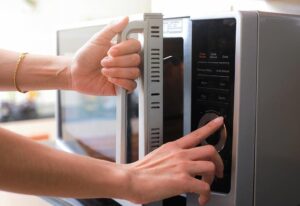
Image Source: parenting.firstcry.com
Yes, you can use it but with precautions. Follow the safety measures mentioned below to ensure the health of your little one.
- Do not use plastic containers for heating, even if they mention microwave safe. These releases the chemical compounds into your food. Hence, these may affect the growth and development of your baby.
- Always heat the baby food in the glass jar or container. If you are using packed baby food, follow the instructions given on the package.
- Heat the entire package only if your baby can eat it. If not, transfer the required quantity to the glass container and heat it.
- Microwave heating creates hot spots or uneven temperatures throughout the food. So, make sure you stir the food after heating and let it cool down for a bit. This will prevent your baby from risk of burning the mouth.
It also depends on your Kitchen Hygiene.
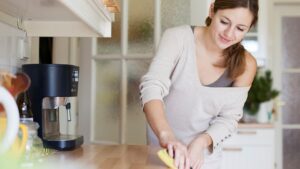
Image source: www.besthomekitchenstuff.co.uk
Your kitchen hygiene matters a lot when it comes to ensuring the safety of baby food. The food preparation area, utensils, chopping boards that are involved in the food preparation must be clean. Always use hot soapy water for cleaning purposes. Rinse with clean water and dry before you use them.
In the end, it is the health of your baby that matters!
As I mentioned earlier, the immune system of your baby will be in the developing stage in the earlier days. So, it is important to stress on the food safety aspect of your baby’s food along with its nutritional profile. I hope, this piece of content would help you in ensuring the good health of your baby.






Leave a Reply